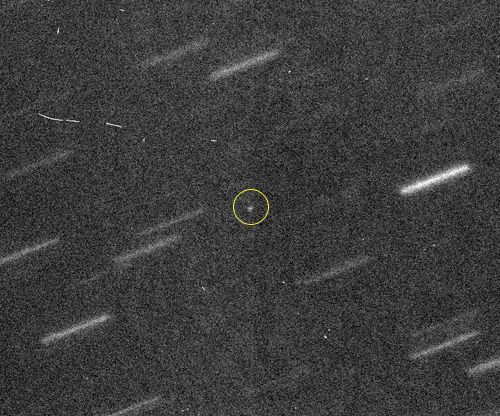
Great news: an asteroid won't destroy Earth in 2040. While there was a possibility of a cosmic collision, in a newly released study scientists have now confirmed asteroid 2011 AG5 will miss hitting Earth, according to MSNBC.
Just one year ago, researchers weren't quite so sure the asteroid wouldn't smash into the planet in 2040. The 460-foot-wide rock was discovered on an orbit that took it very close to our planet. A projection of the asteroid's future orbit indicated that there was a small but "non-zero" chance of smashing into the Earth, odds of about 1-in-500.
"That would be bad: It would explode upon impact with a yield of more than 100 megatons, far larger than even the biggest nuclear weapon ever detonated on Earth. While that wouldn't cause a worldwide extinction event-this is no dinosaur-killer-an explosion equal to blowing up 100 million tons of TNT is something to be avoided," noted Slate.
Astronomers were able to confirm the asteroid's harmless status after observing it in October using the Gemini North telescope in Hawaii. Researchers believed there was still a small chance the asteroid would collide with Earth because its orbit had been difficult to determine accurately enough to predict where it would be years in the future. Scientists were only able to make a couple of observations before 2011 AG5 disappeared as it got too close to the Sun.
With the help of the Gemini telescope though, researchers now know that the asteroid shouldn't come any closer to Earth than 550,000 miles, about twice the distance between the Earth and moon.
"These were extremely difficult observations of a very faint object," the University of Hawaii's Richard Wainscoat, a member of the team of researchers monitoring 2011 AG5, said in a statement. "We were surprised by how easily the Gemini telescope was able to recover such a faint asteroid so low in the sky."
NASA's astronomers and scientists around the globe regular monitor the skies for asteroids that could potentially threaten the safety of Earth. According to NASA scientists, about 9,000 near-Earth asteroids such as 2011 AG5 have been discovered to date, though up to a million or more could exist, NASA scientists say.
NASA says almost 95 percent of the largest near-Earth asteroids - objects larger than .6 miles - are accounted for.
© 2025 Latin Times. All rights reserved. Do not reproduce without permission.




